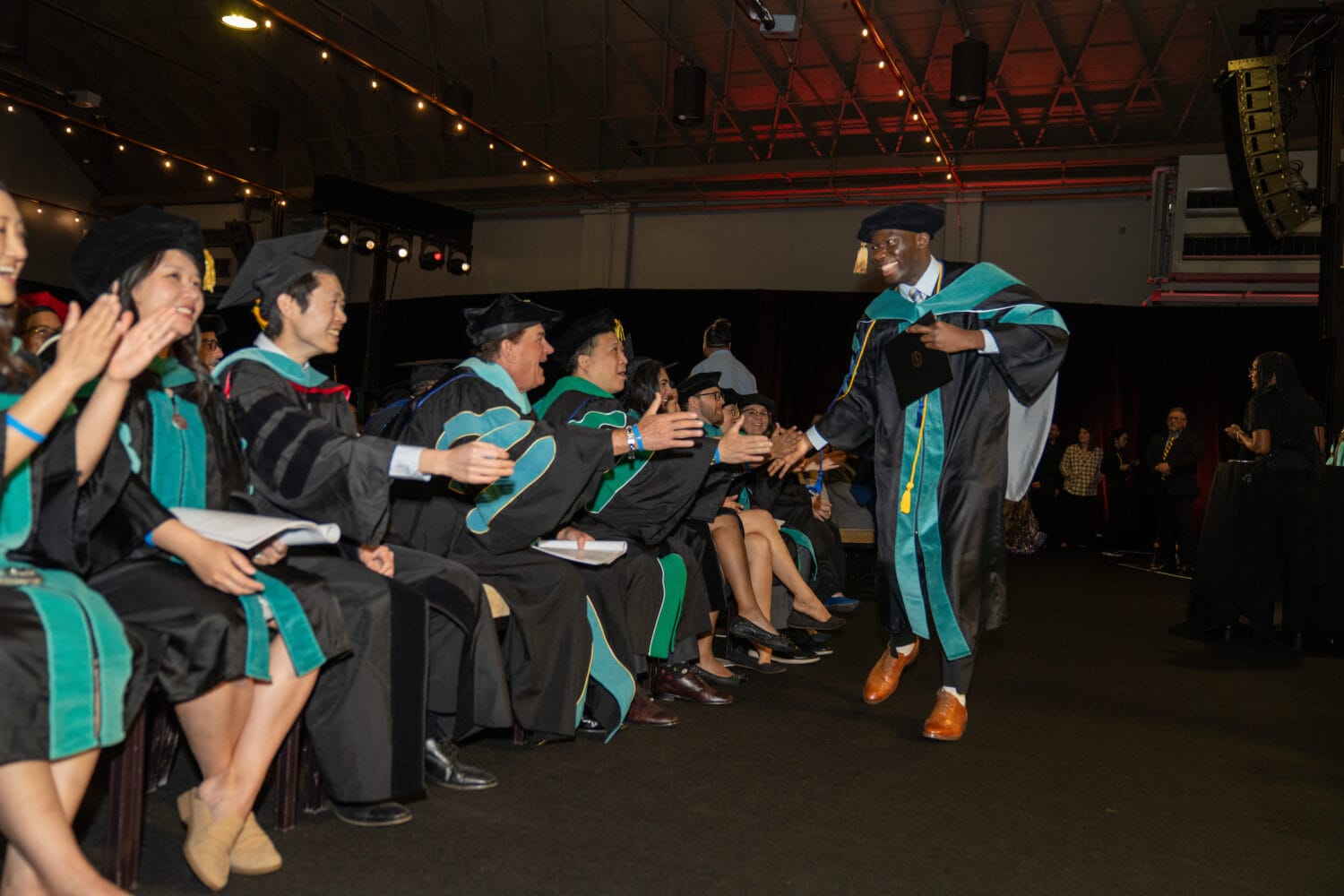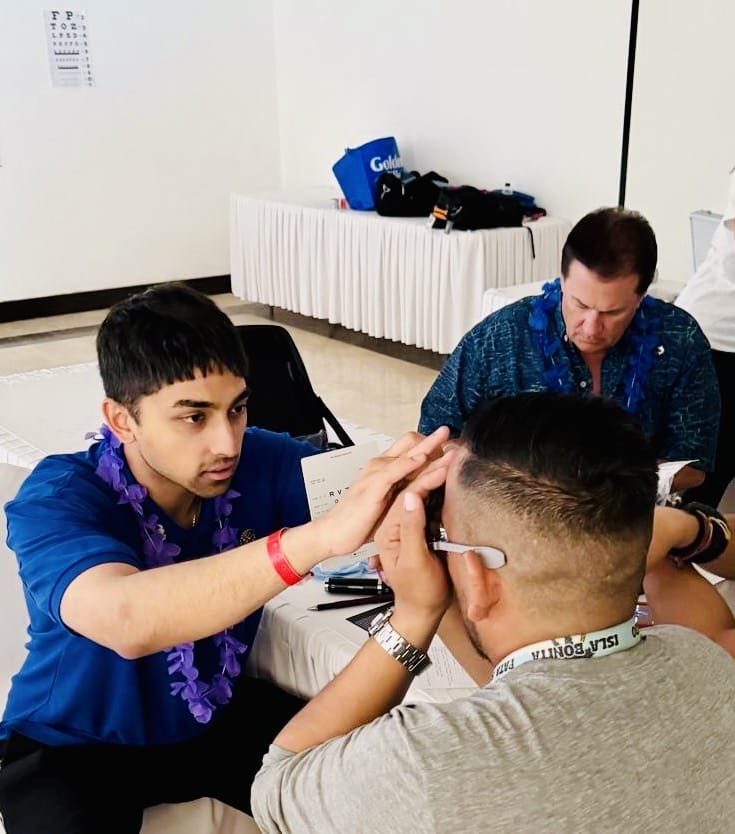Eye Care Center doctors want to make sure your back-to-school list includes a comprehensive eye exam
Millions of children are heading back to their classrooms without the visual skills required to succeed in school.
Most people assume if you can see the letters on the eye chart your vision is fine, yet being able to see the letters on the eye chart is just one of 17 visual skills necessary for academic success.
"The myth that ’20/20′ means you have perfect vision started in the 1800s, when the eye chart was created," states Dr. Brad Habermehl, president of the College of Optometrists in Vision Development.
Josephine Franc, a registered dental hygienist for the Dental Center in the Patient Care Center (PCC) at Western University of Health Sciences in Pomona, Calif., says her son Jaro Franc, 13, a Vineyard Middle School seventh-grader in Alta Loma, has been struggling with school and fell behind since they returned to the United States after a three-year stay in the Czech Republic.
"We kept getting his eyes checked, just the way he was looking, kind of off to the side," said Josephine. "I would suggest to some of the doctors that maybe he needs some kind of vision therapy, because we did it with our oldest daughter."
Josephine said she didn’t realize her son was seeing everything double or flipped. He’s had to push himself to read and kept compensating when he looked at the blackboard. His eyes would get tired and red, and he always complained he couldn’t see.
The Eye Care Center, which opened in May on the first floor of the Patient Care Center, offers a full range of eye care treatments and services for patients of all ages by experienced University faculty doctors of optometry. Josephine brought her son in to see Dr. Stuart Mann, the College of Optometry’s Chief of Pediatric Services and an assistant professor.
Mann was able to quickly identify that Jaro had intermittent double vision and did not like to read, so he put him in optometric vision therapy sessions at the Eye Care Center.
"By the third therapy, he could see really well," said Josephine. "I’m excited to see how much better it will be for him and how long he can sustain reading in a textbook format." Optometric vision therapy treats vision problems that make reading and learning difficult. While vision therapy does not treat dyslexia, vision problems can often be misdiagnosed as learning disabilities such as dyslexia or even Attention Deficit-Hyperactivity Disorder (ADHD).
"Not all vision problems interfere with reading, and not all reading problems are vision problems," Mann said. "A child needs to see clearly up close, with minimal amount of effort, and has to keep both eyes lined up. They need to sustain that for long periods of time and be able to change focus so they can look at the blackboard."
Mann said that when there is a focusing problem, it takes such a long time to change focus from far to near that by the time they change that focus, children with vision problems forget what they were copying off the blackboard.
College of Osteopathic Medicine of the Pacific student Ashlynn Gordon, DO ’13, has had reading issues throughout her life. She took a nine-month break from medical school at WesternU and restarted her second year in August 2010.
"When I started my second year and I was having trouble just finishing tests, I was getting bad migraines and I took a leave of absence," Gordon said.
Until this year she did not realize the depth of her vision problems, always assuming the doctors the past 20-plus years were diagnosing her correctly. She even thought she might have dyslexia or Attention Deficit Disorder (ADD). She ended up taking an online ADD test that revealed she might have a hidden vision problem.
Mann recently diagnosed Gordon with Convergence Insufficiency (CI), a common near-vision problem that causes eyestrain, blurred vision, double vision and/or headaches that interfere with a person’s ability to see, read, learn and work at close distances.
It takes a toll on Gordon to converge her eyes on just one word. After going to optometric vision therapy three to four times a week for hour-long sessions, she is more aware of her problem and can work on it. Her focusing and tracking are getting better, but the convergence is still a work in progress.
"I was really excited because it’s fixable. Get this fixed and I can read faster, I can comprehend what I’m reading," she said of Mann’s discovery.
"It doesn’t take a rocket scientist to understand that if a child is seeing double, ghosty or unstable text, it will be hard to read," Habermehl said. "Yet, if you assume vision is fine, the only possible conclusion one can reach is the child has a learning disability such as ADHD or dyslexia."
Studies indicate that 60 percent of children identified as "problem learners" actually suffer from undetected vision problems, according to the American Optometric Association.
Not all eye doctors test for learning-related vision problems, so it is important for parents to ask the right questions. Call your eye doctor’s office and ask:
1. Do you test for learning-related vision problems?
2. Do you provide an in-office vision therapy program when indicated, or will you refer me to someone who does?
If the answer is no to either one or both of these questions, visit COVD’s website, www.covd.org, to find a developmental optometrist near you.
For more information about the PCC Eye Care Center at WesternU, or to make an appointment, call 909-706-3899 or visit http://www.westernupcc.com/eye.html



